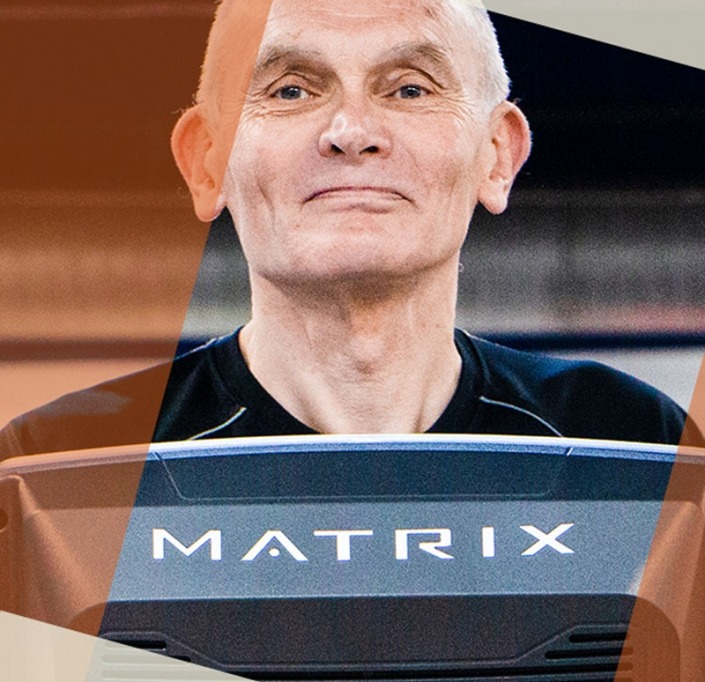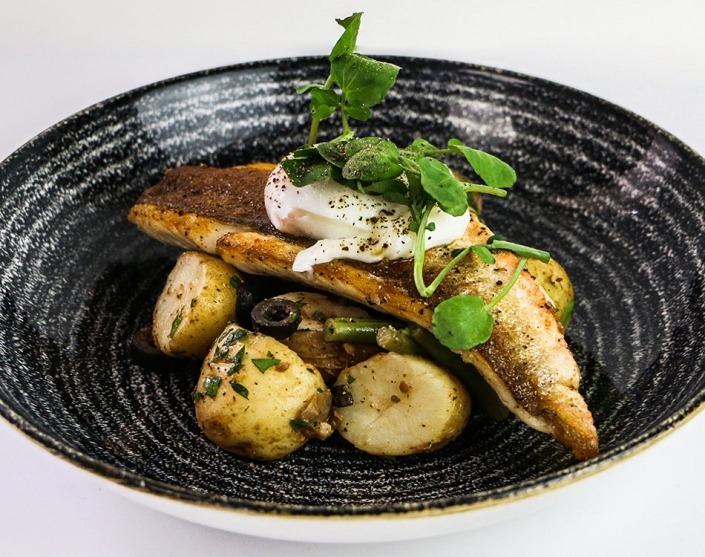Eating more mindfully
By Juliana Kassianos, Health and Wellbeing Therapist
By Juliana Kassianos, Health and Wellbeing Therapist
There’s nothing like a freshly baked tray of hot gooey brownies as their sweet chocolaty aroma fills the kitchen. Even just thinking about it, I can feel my mouth water and my stomach start to churn. This reaction is my body preparing to digest them, so that by the time I take my first bite, my digestive system is ready.
It’s called the Cephalic Phase Digestive Response (CPDR). This is just a fancy term used to describe the aroma, visual stimulation and environment of a meal. Cephalic means ‘of the head’, so you could think of it as ‘the head phase’ of digestion.
Research estimates 30-40% of our digestive response to a meal is due to the CPDR. This means if you’re not fully present and aware in your eating experience, you could be missing out on 30-40% of your digestive power.
By being more mindful when you eat, you can increase your digestive response enabling you to absorb more nutrients from the food you eat, as well as prevent overeating, which is easy to do when you’re at home all day in lockdown. Follow these five simple steps to eat more mindfully and build healthier habits around food.
Whether we feel stressed, sad or stroppy, we often turn to food for comfort, feeding our feelings instead of filling our tummies. So, how can we tell if we’re stuffing our emotions or satisfying actual hunger? It’s easy to mistake emotional hunger for physical hunger, but there are a few simple signs we can look out for.
When emotional hunger rumbles, we tend to crave comfort food; food that is high in carbohydrates, fats and sugars, like pizza, biscuits and crisps. These boost our serotonin and dopamine levels, which increase the feelings of pleasure in the brain. Cravings for these foods come on suddenly and we feel the need for instant satisfaction. They become all we can think about; the only thing that will meet our need. We quickly eat the food without paying full attention, eating more and more as we try to satisfy ourselves. Engrossed in our feeding frenzy and forgetting to even come up for air, we make our way through a whole pack of biscuits, until just crumbs remain. We quickly hide the evidence, throwing the empty packet in the bin. However, this doesn’t stop us feeling guilt and regret for having pigged out, as we know full well it wasn’t for nutritional purposes. Feeling even worse than we did in the beginning and having not felt satisfied, we mindlessly munch more food, resulting in a viscous cycle that continues on and on.
On the other hand, when we get physical hunger pangs, it’s our body’s own way of saying we need more energy. We get this energy in the form of nutrients from the food we eat. To recognise this type of hunger, we have to tap into our senses and listen to our body for signs that come on gradually; the growling noise our stomach makes, the feeling of weakness and even light-headiness. When we do eat, we don’t crave specific food and we have the ability to satisfy our hunger and then stop when we’re full. Also, we don’t tend to feel bad after we’ve eaten.
Next time you find yourself heading towards the fridge or cupboard, take a moment to pause and reflect. Think about whether you actually feel physically hungry. If it’s emotional hunger you’re feeling, try to identify and acknowledge the emotion behind it and ask yourself what healthier way you could meet your emotional need. For example, if you’re feeling low, you may choose to call a friend.
Stress is a state of mental or emotional strain, which not only affects our thoughts, feelings and emotions, but also processes in the body. It turns on our flight or fight mode, so we can save ourselves from life threatening situations, however, many stresses we deal with today don’t involve a threat to our life.
The body can’t distinguish between real and imagined stress. Let’s say you’re eating a snack, whilst rushing out the door. Your body doesn’t know that it’s not a life-threatening situation and so initiates the stress response, as though you were running from a bear. This results in your digestive system shutting down, as blood is diverted away from your digestive system to your arms and legs.
Make sure your body is relaxed before you start eating. If you’re feeling stressed, take a few minutes to practice four rounds of the 4-7-8 breathing technique, it will help to induce your parasympathetic nervous system and turn off the stress response. If any point your breath become compromised, make sure you stop and return to your natural breathing cycle.
We tend to wolf our food down, whilst scrolling through social media, checking our emails or flicking through a magazine. Feeling the pangs of indigestion, we tend to blame them on what we’ve eaten, not how we’ve eaten. Although it’s tempting to multitask, it’s worth taking 20 minutes away from distractions to eat your meal in a peaceful environment.
When you’re eating, be fully present and use all five senses to take in your food:
Most of us chew and swallow our food without consciously thinking about it. We tend to switch on auto-pilot mode. What we need to remember though is that digestion starts in the mouth.
The act of chewing activates signalling messages that prepares the body for digestion. Chewing breaks down our food into smaller pieces. This means the food has an increased surface area for the digestive juices to work their magic on. As we chew, saliva is secreted into the mouth. This contains digestive enzymes that start the chemical breakdown of food and when it’s time to swallow, assists the passage of food down the tube that carries the food into the stomach. At the lower end of the stomach there’s a muscle that has to relax to allow food to leave the stomach and enter the small intestine. Chewing helps to relax this muscle, which allows the food to pass through easily.
If we don’t chew our food enough, then it will pass through our digestive system without being properly broken down, which means that fewer nutrients will be absorbed. Plus, we’re more likely to get flatulence and other not so nice indigestion symptoms, as large food pieces become food for bacteria in our colon.
Although we all know we should chew our food, a lot of us don’t chew enough. To get into the habit of chewing, cut your food into small bite size pieces and try to chew each bite at least 10 times before swallowing. It may seem a lot at first, but you’ll soon make it habit.
Do you scoff your food down as fast as you can, taking hardly any breaths between bites? I know it’s not something we really pay attention to but becoming more mindful of our breath whilst we eat is really important. Increased oxygen in our blood increases the absorption of nutrients we get from our food and speeds up our metabolism.
In the small intestine we have intestinal villi. These are finger-like projections that increase the absorption of nutrients from food passing through. They also extract large amounts of oxygen to help break down our food. If our blood has reduced amounts of oxygen for the intestinal villi to extract, then nutrient absorption decreases, and our metabolism slows down.
Think of metabolism like fire, it needs both fuel, which in this case is food and air circulation i.e., oxygen, in order to burn. So, if we breathe more whilst eating, we increase the amount of oxygen in our blood, which increases nutrient absorption and speeds up our metabolism.
Here are some tips to help remind you to breathe between bites and slow down the pace you eat at:





Cookie policy | Privacy policy | Accessibility statement | Terms & conditions | Gender pay Gap Information |

 Keeping Positive with Will Satch
Keeping Positive with Will Satch 